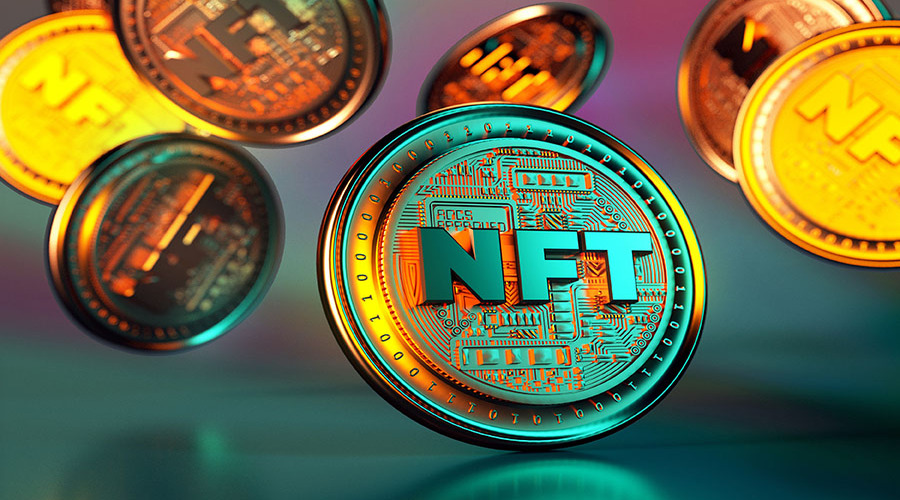Introduction
NFTs and social tokens are two of the most discussed topics in the cryptocurrency world. While they have some similarities, they serve different purposes. NFTs have been around for a while, and their popularity has surged recently due to their unique features. On the other hand, social tokens are a relatively new concept but are quickly gaining traction. In this article, we will explore the relationship between NFTs and social tokens, their key features, and how they can be used.
What are NFTs?
NFTs, or non-fungible tokens, are digital assets that are unique and cannot be replicated. They are stored on a blockchain, which makes them decentralized and secure. NFTs can represent anything from art to music, collectibles, and even tweets. The uniqueness of NFTs makes them valuable, and they can be sold or traded in the same way as traditional assets.
How do NFTs work?
NFTs are created using smart contracts on a blockchain, usually the Ethereum blockchain. Smart contracts are self-executing contracts with the terms of the agreement between the buyer and seller directly written into lines of code. This makes transactions transparent, secure, and irreversible. Once an NFT is created, it can be sold on a marketplace, and the ownership of the NFT can be transferred to the buyer.
The Rise of NFTs
NFTs have been around for a few years, but their popularity has surged in recent times. Some of the reasons for this include:
- The rise of blockchain technology and its increasing adoption.
- The unique features of NFTs, which allow creators to sell their digital art or other digital assets directly to buyers.
- The hype around NFTs, which has created a buzz in the crypto community.
What are Social Tokens?

Social tokens are a type of cryptocurrency that represents a community or brand. They are often used by creators, influencers, or businesses to engage with their followers or customers. Social tokens are designed to create a sense of community and loyalty by providing exclusive access to content or other perks.
How do Social Tokens work?
Social tokens are created using smart contracts on a blockchain, usually the Ethereum blockchain. The social token can be bought, sold, and traded on a marketplace, and the value of the token can fluctuate depending on supply and demand. The owner of the social token can receive benefits or rewards, such as exclusive content or merchandise, from the creator or brand.
The Rise of Social Tokens
Social tokens are a relatively new concept, but they are quickly gaining traction. Some of the reasons for this include:
- The rise of the creator economy, where individuals can monetize their content and build a community of followers.
- The need for creators and businesses to engage with their followers and customers.
- The flexibility of social tokens, which can be customized to fit the needs of a specific community or brand.
The Relationship between NFTs and Social Tokens
While NFTs and social tokens serve different purposes, there is a connection between the two. Some creators and businesses are using NFTs to create social tokens that provide access to exclusive content or other perks. For example, an NFT could represent a membership to a community or a brand, and the owner of the NFT could receive benefits or rewards. This creates a sense of exclusivity and ownership among the community members.
Opportunities for NFTs and Social Tokens
NFTs and social tokens provide many opportunities for creators, businesses, and investors. Some of these opportunities include:
Monetizing Content
Creators can use NFTs and social tokens to monetize their content and engage with their followers. By creating exclusive access to content or other perks through NFTs or social tokens, creators can generate revenue and build a loyal fan base.
Providing Access to Exclusive Merchandise
NFTs and social tokens can also be used to provide access to exclusive merchandise. For example, an NFT could represent a limited edition merchandise item, and the owner of the NFT would be the only one with access to it. This creates a sense of scarcity and exclusivity, which can drive up demand and value.
Supporting Social Causes
NFTs and social tokens can also be used to support social causes. For example, a social token could be created to support a charity or a social movement. The value of the token could be linked to the success of the cause, creating a win-win situation for both the investors and the cause.
Creating Investment Opportunities
NFTs and social tokens can also be used as investment opportunities. Just like traditional assets, the value of NFTs and social tokens can fluctuate based on supply and demand. This creates opportunities for investors to buy low and sell high, making a profit in the process.
The Advantages of NFTs
NFTs have several advantages that make them appealing to creators, collectors, and investors. Some of these advantages include:
Proof of Ownership
NFTs provide proof of ownership for digital assets, which was not possible before the rise of blockchain technology. This is especially important for creators who want to sell their digital art or other digital assets, as it ensures that the buyer owns the original work.
Uniqueness
NFTs are unique and cannot be replicated, making them more valuable than traditional digital assets. This uniqueness also creates a sense of exclusivity and ownership among the buyers.
Traceability
NFTs are stored on a blockchain, which makes them traceable and transparent. This means that the history of the NFT, including its ownership and transaction history, can be easily tracked.
The Advantages of Social Tokens
Social tokens also have several advantages that make them appealing to creators, influencers, and businesses. Some of these advantages include:
Community Building
Social tokens can help creators and businesses build a community around their brand or content. By providing exclusive access to content or other perks, social tokens create a sense of loyalty and ownership among the community members.
Flexibility
Social tokens can be customized to fit the needs of a specific community or brand. This means that creators and businesses can create social tokens that are unique and tailored to their audience.
Monetization
Social tokens provide a new way for creators and businesses to monetize their content and engage with their followers or customers. By creating a social token, creators and businesses can provide exclusive access to content or other perks, generating revenue in the process.
The Future of NFTs and Social Tokens
The future of NFTs and social tokens is bright, as more creators, businesses, and investors discover the potential of these technologies. Some of the trends we can expect to see in the future include:
Mainstream Adoption
NFTs and social tokens are still relatively new concepts, but we can expect to see more mainstream adoption in the future. As more businesses and creators discover the potential of these technologies, we may see them become a standard part of the digital economy.
Integration with Traditional Assets
NFTs and social tokens may also be integrated with traditional assets in the future. For example, we may see NFTs that represent ownership of physical assets, such as real estate or cars.
Innovation and New Use Cases
As the technology evolves, we can expect to see more innovation and new use cases for NFTs and social tokens. For example, we may see NFTs that represent access to exclusive experiences, such as concerts or sporting events.
Challenges and Risks of NFTs and Social Tokens
As with any new technology, NFTs and social tokens come with their own set of challenges and risks. Some of these challenges include:
Lack of Regulation
NFTs and social tokens are still largely unregulated, which means that there are no clear guidelines or rules governing their use. This can create risks for investors and buyers, as they may not have legal recourse in the event of fraud or other issues.
Volatility
NFTs and social tokens can be volatile, with their value fluctuating based on supply and demand. This can make it difficult for investors to predict their returns, and it may also create risks for creators and businesses who rely on these tokens for revenue.
Security Risks
NFTs and social tokens are stored on a blockchain, which makes them secure. However, they are still vulnerable to hacking and other security risks. This can create risks for both creators and buyers, as their digital assets may be stolen or compromised.
The Role of Social Tokens in the Creator Economy
Social tokens are becoming an important part of the creator economy, which refers to individuals who create content and build a following online. Some of the ways that social tokens are being used in the creator economy include:
Monetization
Social tokens provide a new way for creators to monetize their content and engage with their followers. By creating a social token, creators can provide exclusive access to content or other perks, generating revenue in the process.
Community Building
Social tokens can help creators build a community around their brand or content. By providing exclusive access to content or other perks, social tokens create a sense of loyalty and ownership among the community members.
Flexibility
Social tokens can be customized to fit the needs of a specific community or brand. This means that creators can create social tokens that are unique and tailored to their audience, providing a more personalized experience for their followers.
The Role of NFTs in the Art World
NFTs are becoming an important part of the art world, providing a new way for artists to monetize their work and sell it directly to buyers. Some of the ways that NFTs are being used in the art world include:
Direct Sales
NFTs provide a new way for artists to sell their work directly to buyers, without the need for intermediaries like galleries or auction houses. This allows artists to keep a larger portion of the sale price and have more control over their work.
Verification of Ownership
NFTs provide a way for artists to verify the ownership of their work, which was not possible before the rise of blockchain technology. This helps to prevent fraud and ensures that the artist receives proper credit and compensation for their work.
Increased Accessibility
NFTs provide a way for artists to make their work more accessible to a wider audience. By selling their work as NFTs, artists can reach buyers from all over the world, regardless of their location.
Conclusion
NFTs and social tokens are two of the most exciting developments in the cryptocurrency world. While they have some differences, they share some similarities and are connected in some ways. NFTs provide unique features that allow creators to sell their digital art or other digital assets directly to buyers, while social tokens create a sense of community and loyalty by providing access to exclusive content or other perks. Both NFTs and social tokens provide many opportunities for creators, businesses, and investors, and we can expect to see more developments and use cases in the future.
Pranav is a tech, crypto & blockchain writer based in London. He has been following the development of blockchain technology for several years.




